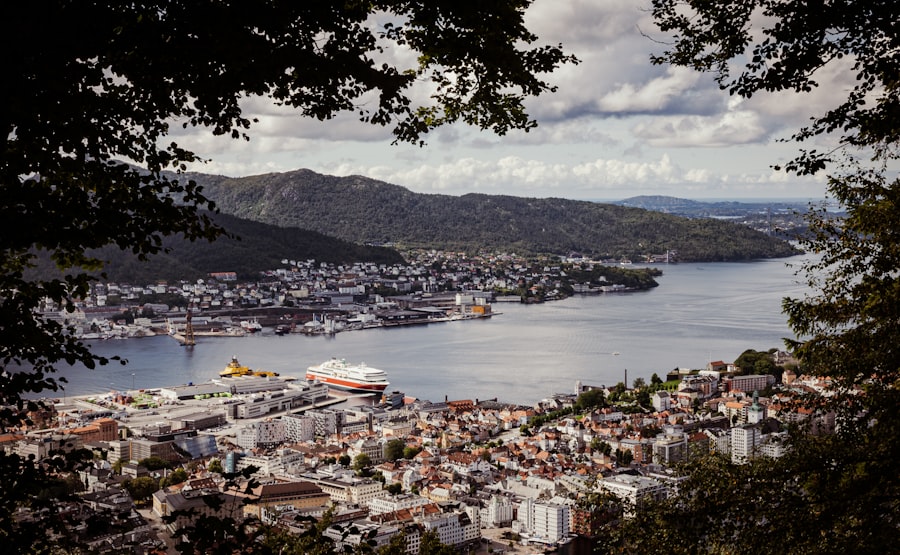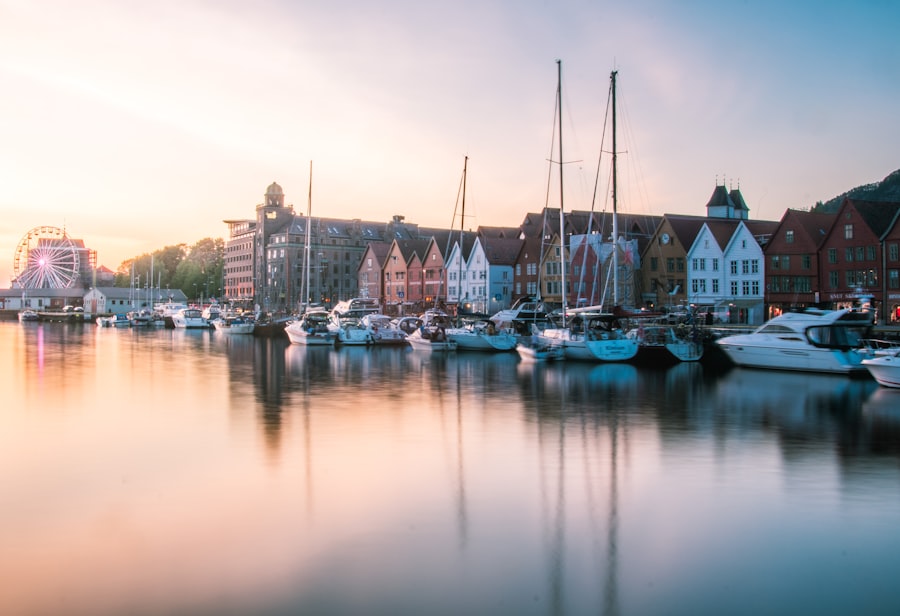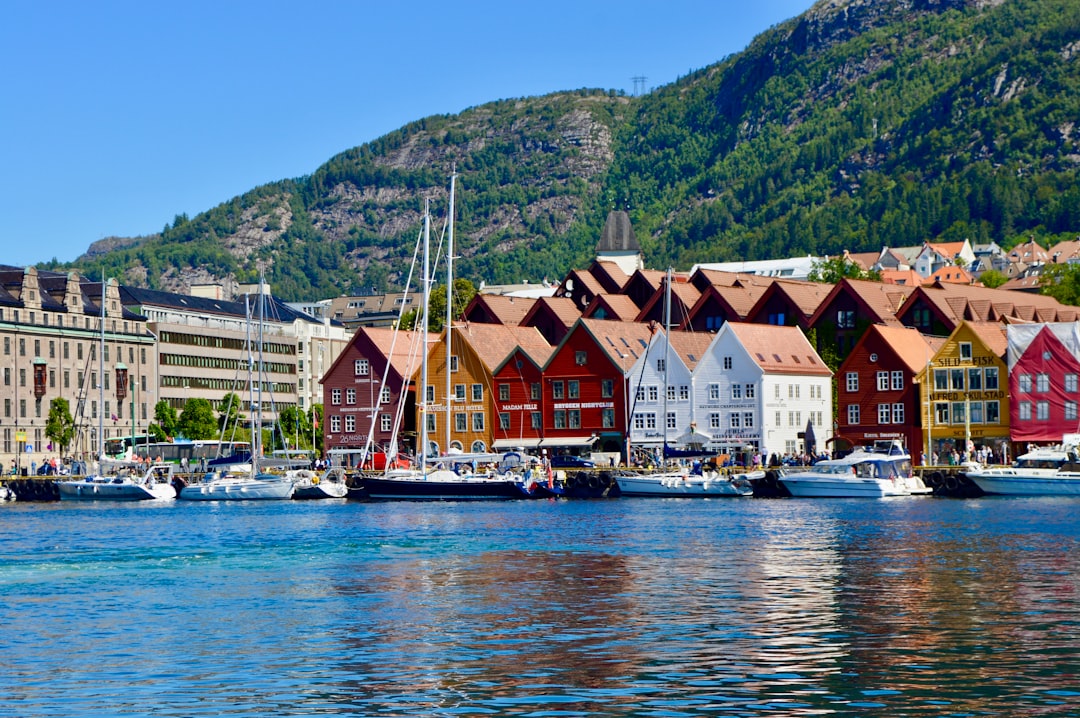Romjulen, often referred to as the Christmas season in Norway, is a time of profound significance and joy. It encompasses the period from Christmas Eve, known as “Julaften,” through to the New Year, culminating in the celebration of Epiphany on January 6th. This festive season is steeped in rich traditions, cultural practices, and a sense of community that resonates deeply within Norwegian society.
The term “Romjul” itself translates to “the time of peace,” reflecting the tranquil and reflective nature of this period, where families come together to celebrate and honour their heritage. During Romjulen, the atmosphere in Norway transforms into a winter wonderland, with snow blanketing the landscape and twinkling lights adorning homes and streets. It is a time when the spirit of giving and togetherness prevails, as families gather to share meals, exchange gifts, and partake in various customs that have been passed down through generations.
The essence of Romjulen lies not only in its festive celebrations but also in the warmth and love that permeate the air, making it a cherished time for Norwegians. Your journey to a smooth relocation starts here. Talk one-on-one with a Norway Relocation specialist and turn your plan into a reality.
Summary
- Romjulen is the period between Christmas and New Year’s Day, typically from December 26th to January 1st.
- Traditions during Romjulen include visiting friends and family, attending parties, and participating in outdoor activities.
- Traditional Romjulen foods include pinnekjøtt (dried and salted lamb ribs), lutefisk (dried whitefish), and kransekake (almond ring cake).
- Activities during Romjulen include skiing, ice skating, and attending concerts and performances.
- Romjulen holds significance in Norwegian culture as a time for relaxation, reflection, and spending quality time with loved ones.
Traditions and customs during Romjulen
The traditions and customs associated with Romjulen are as diverse as the regions of Norway itself. One of the most beloved customs is the lighting of candles, which symbolises hope and warmth during the darkest days of winter. Many families will light candles on their windowsills, creating a welcoming glow that invites both friends and strangers alike.
Additionally, the practice of decorating Christmas trees with ornaments, lights, and traditional Norwegian decorations is a cherished activity that brings families together in preparation for the festivities. Another significant tradition is the celebration of “Julebord,” or Christmas parties, which are held by workplaces, friends, and families. These gatherings often feature traditional Norwegian dishes and drinks, fostering a sense of camaraderie and joy among participants.
The act of singing carols, known as “julesanger,” is also prevalent during this time, with many families gathering around the piano or fireplace to share in the joy of music and storytelling. These customs not only enhance the festive spirit but also strengthen familial bonds and community ties.
Food and drink during Romjulen

Food plays a central role in Romjulen celebrations, with traditional dishes taking centre stage at festive gatherings. One of the most iconic meals is “ribbe,” which consists of roasted pork belly served with crispy crackling, accompanied by sauerkraut and potatoes. Another popular dish is “lutefisk,” a unique preparation of dried fish that has been soaked in a lye solution before being cooked.
These hearty meals are often enjoyed alongside rich gravies and sauces that elevate their flavours. In addition to savoury dishes, sweet treats are abundant during Romjulen. “Kransekake,” a traditional almond cake shaped into rings, is often served at festive occasions, while “pepperkaker,” or gingerbread cookies, are a favourite among children who enjoy decorating them with icing.
To wash it all down, Norwegians indulge in “gløgg,” a spiced mulled wine that warms the soul on cold winter nights. The culinary delights of Romjulen not only satisfy the palate but also evoke nostalgia and a sense of belonging among those who partake in these time-honoured recipes.
Activities and entertainment during Romjulen
Romjulen is not just about food and family; it also offers a plethora of activities and entertainment options that bring joy to both young and old. One popular activity is ice skating, which takes place on frozen lakes and outdoor rinks across the country. Families often bundle up in warm clothing to enjoy this winter pastime together, creating cherished memories on the ice.
Additionally, many towns host Christmas markets where visitors can browse handmade crafts, enjoy festive music, and sample seasonal treats. Another beloved tradition is the gathering for “julefilmer,” or Christmas films, which are screened on television or enjoyed at home. Classic films such as “Jul i Blåfjell” (Christmas in Blue Mountain) capture the essence of Norwegian folklore and add to the festive atmosphere.
Furthermore, many communities organise concerts featuring traditional Christmas music, allowing locals to come together in celebration of their shared culture. These activities foster a sense of unity and joy during Romjulen, making it a truly special time for all.
The significance of Romjulen in Norwegian culture
Romjulen holds immense significance within Norwegian culture, serving as a time for reflection, gratitude, and connection with loved ones. It is a period when people take a step back from their busy lives to appreciate what truly matters: family, friendship, and community. The values associated with Romjulen—such as generosity, kindness, and togetherness—are deeply ingrained in Norwegian society and are passed down through generations.
Moreover, Romjulen serves as an opportunity for Norwegians to reconnect with their cultural roots. Many families engage in storytelling traditions that recount tales from their ancestors or share folklore that has shaped their identity. This emphasis on heritage fosters a sense of pride among Norwegians and reinforces their connection to the land and its history.
As such, Romjulen is not merely a festive season; it is a vital part of what it means to be Norwegian.
How to embrace the hygge of Romjulen

Embracing the hygge of Romjulen involves creating an atmosphere of warmth, comfort, and contentment within one’s home and community. The concept of hygge—rooted in Danish culture but widely adopted across Scandinavia—encourages individuals to find joy in simple pleasures. During Romjulen, this can be achieved by decorating homes with soft lighting, candles, and natural elements such as pine branches or berries that evoke the beauty of winter.
Additionally, spending quality time with loved ones is essential to capturing the essence of hygge during this season. Whether it’s gathering around the fireplace for storytelling or sharing a meal together, these moments foster connection and create lasting memories. Engaging in activities such as baking traditional cookies or crafting handmade decorations can also enhance the sense of togetherness while allowing individuals to express their creativity.
By embracing hygge during Romjulen, one can cultivate an environment filled with love and warmth that embodies the spirit of this cherished season.
The best places to experience Romjulen in Norway
Norway offers an array of enchanting locations to experience the magic of Romjulen. One must-visit destination is Oslo, where the city transforms into a festive wonderland adorned with twinkling lights and bustling Christmas markets. The iconic Christmas tree at Karl Johans gate stands tall as a symbol of holiday cheer, while visitors can enjoy ice skating at Spikersuppa or indulge in delicious treats at local stalls.
Another remarkable place to experience Romjulen is Bergen, known for its picturesque harbour and charming wooden houses. The city’s Christmas market features local artisans showcasing their crafts alongside traditional food stalls offering seasonal delicacies. For those seeking a more rural experience, visiting the Lofoten Islands during this time provides breathtaking views of snow-capped mountains and opportunities for winter activities such as skiing or dog sledding amidst stunning landscapes.
Romjulen in the modern age
In recent years, Romjulen has evolved alongside modern influences while still retaining its core traditions. The advent of technology has transformed how people celebrate this season; social media platforms allow families to share their festive experiences with loved ones near and far. Virtual gatherings have become increasingly popular as people seek ways to connect despite geographical distances.
Moreover, contemporary interpretations of traditional customs have emerged, with many young Norwegians incorporating global influences into their celebrations. While some may opt for non-traditional decorations or fusion cuisine at their holiday feasts, the underlying values of love and togetherness remain unchanged. This blend of old and new reflects Norway’s ability to adapt while honouring its rich cultural heritage during Romjulen.
Romjulen and the winter solstice
The winter solstice holds special significance during Romjulen as it marks the longest night of the year—a time when Norwegians celebrate the return of light after months of darkness. This celestial event has historically been associated with various pagan traditions that honour nature’s cycles and the changing seasons. Many families will light candles or bonfires to symbolise hope and renewal as they await longer days ahead.
In contemporary celebrations, some Norwegians incorporate elements from these ancient traditions into their Romjulen festivities by hosting gatherings centred around themes of light and warmth. This connection to nature serves as a reminder of resilience during winter’s harshness while fostering appreciation for the beauty found within each season’s unique offerings.
Romjulen and the Norwegian outdoors
The Norwegian outdoors plays an integral role in shaping how people experience Romjulen. With its stunning landscapes blanketed in snow, opportunities for outdoor activities abound during this festive season. Many families take advantage of Norway’s natural beauty by engaging in winter sports such as skiing or snowboarding at local resorts or simply enjoying leisurely walks through picturesque forests adorned with frost-kissed trees.
Moreover, outdoor gatherings often take place around bonfires where friends come together to share stories while sipping hot cocoa or gløgg under starry skies illuminated by shimmering snowflakes falling gently around them. These experiences foster connections not only among individuals but also between people and nature—a vital aspect that enriches one’s appreciation for both Romjulen traditions and Norway’s breathtaking environment.
Bringing Romjulen traditions home
For those who wish to carry the spirit of Romjulen beyond Norway’s borders, incorporating its traditions into one’s own celebrations can create meaningful connections with family and friends worldwide. Simple gestures such as lighting candles during dinner or preparing traditional Norwegian dishes can evoke memories associated with this cherished season while fostering an atmosphere filled with warmth. Additionally, sharing stories about Norwegian customs or participating in local holiday events can help bridge cultural gaps while promoting understanding among diverse communities.
By embracing these traditions at home—whether through food, music, or storytelling—individuals can cultivate an appreciation for Norway’s rich heritage while creating new memories that honour both past and present celebrations during this magical time of year. In conclusion, Romjulen is more than just a festive season; it embodies the essence of Norwegian culture through its rich traditions, culinary delights, outdoor activities, and deep-rooted values centred around family and community. As we navigate modern influences while cherishing age-old customs during this time—whether through embracing hygge or exploring Norway’s breathtaking landscapes—we can all find ways to celebrate love and togetherness during Romjulen wherever we may be located around the globe.
Register for a Norwegian class at the NLS Norwegian Language School now!

